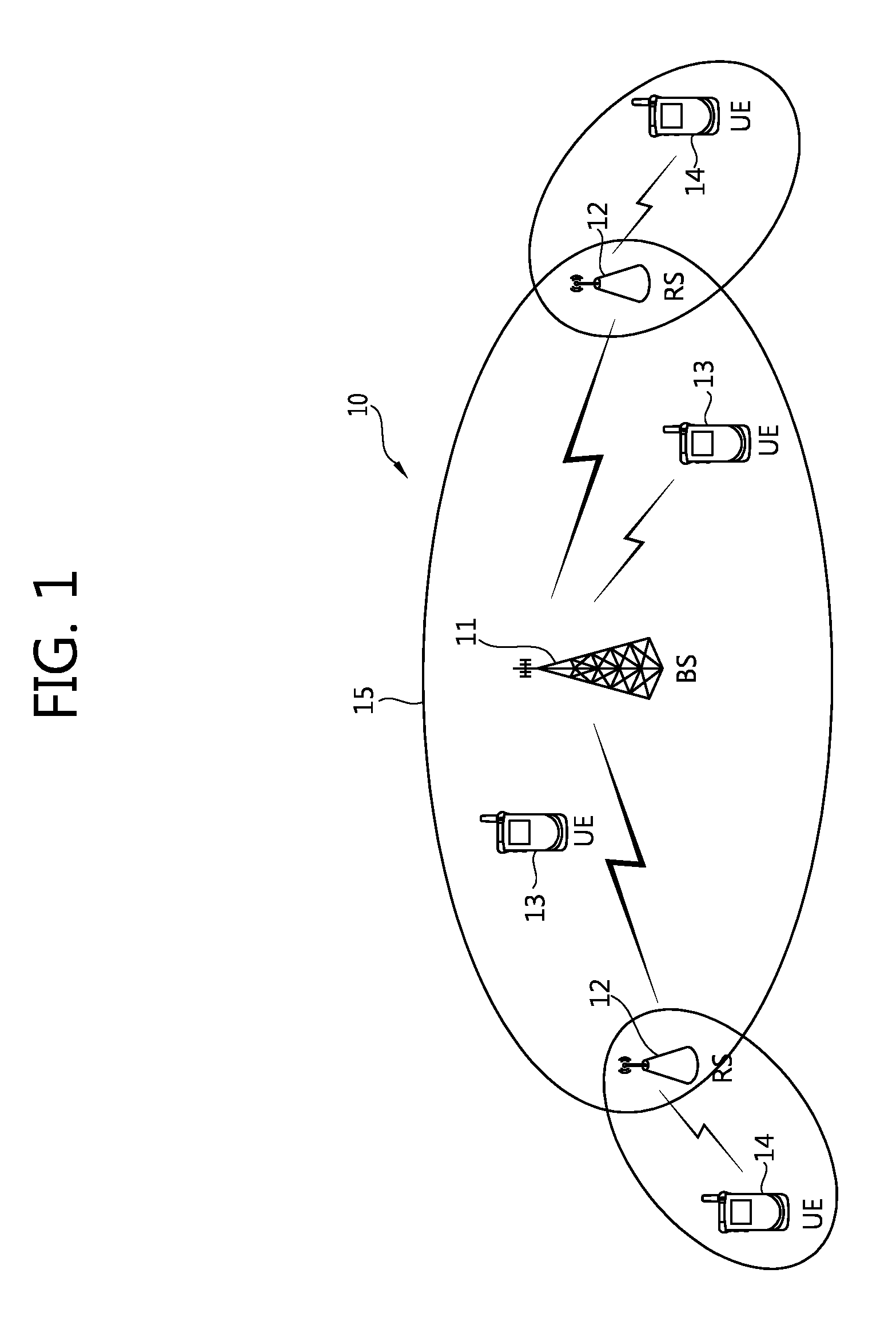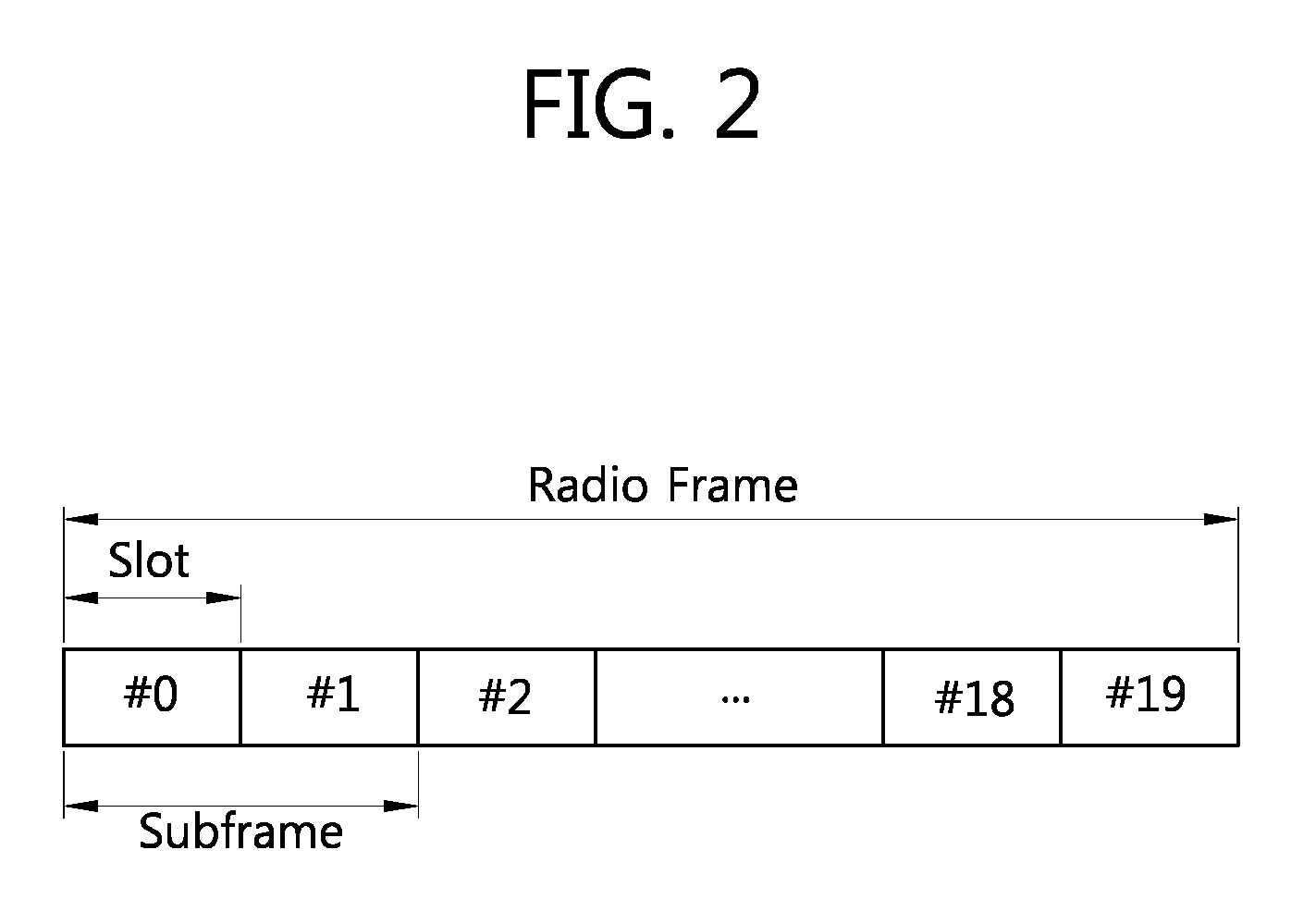Method and apparatus in which a relay station makes a hybrid automatic repeat request in a multi-carrier system
a relay station and automatic repeating technology, applied in the field of wireless communications, can solve the problems of difficult for the rs to receive a signal from the bs in such a subframe, and the rs cannot transmit or receive a signal through one entire subframe in the time domain, and achieve the problem of difficult for the rs to directly use the conventional harq method between the bs and the u
- Summary
- Abstract
- Description
- Claims
- Application Information
AI Technical Summary
Benefits of technology
Problems solved by technology
Method used
Image
Examples
first embodiment
[0082]FIG. 9 shows a carrier operation method in a backhaul link when using a plurality of DL CCs and one UL CC.
[0083]When the plurality of DL CCs can be used in a wireless communication system, some DL CCs can be used in a B-DL and the remaining DL CCs can be used in an A-DL. The UL CC can be used in a B-UL and an A-UL in a TDM manner.
[0084]For example, when there are two available DL CCs (i.e., DL-CC#1 and DL-CC#2), one DL CC (i.e., DL-CC#1) can be used in the B-DL, and the other DL CC (i.e., DL-CC#2) can be used in the A-DL. In this case, the DL-CC#1 and the DL-CC#2 may be different frequency bands. Then, the DL-CC#1 and the DL-CC#2 can be used simultaneously. Therefore, an RS can receive a signal from a BS even in subframes having subframe indices 0, 4, 5, and 9, and A-DL transmission is possible in all subframes.
[0085]In the DL-CC#1 used in the B-DL, a DL grant for B-DL transmission or a UL grant for B-UL transmission can be transmitted. In this case, the DL grant or the UL gra...
second embodiment
[0086]FIG. 10 shows a carrier operation method in a backhaul link when using a plurality of DL CCs and one UL CC.
[0087]Referring to FIG. 10, when there is a plurality of DL CCs that can be used in a wireless communication system, all of the plurality of DL CCs are used in a B-DL and an A-DL, and in this case, the DL CCs are used in the B-DL and the A-DL in a TDM manner. The UL CC can be used in a B-UL and an A-UL in the TDM manner. In this method, subframes having subframe indices 0, 4, 5, and 9 cannot be used when an RS receives a signal from a BS.
[0088]The RS can receive B-DL data from two DL CCs, and in this case, there is a problem in that ACK / NACK for the B-DL data has to be transmitted through one UL CC. To solve this problem, the RS can perform bundling or multiplexing the ACK / NACK for the B-DL data transmitted from a plurality of DL CCs and then can transmit the resultant ACK / NACK by using one UL CC.
[0089]For convenience of explanation, it is assumed in the figures described...
third embodiment
[0101]FIG. 13 shows a carrier operation method in a backhaul link when using a plurality of DL CCs and one UL CC.
[0102]Referring to FIG. 13, when there is a plurality of DL CCs that can be used in a wireless communication system, at least one of the plurality of DL CCs can be dedicated to a B-DL and the remaining DL CCs can be used in the B-DL and an A-DL in a TDM manner. The UL CC can be used in a B-UL and an A-UL in the TDM manner.
[0103]For example, if there are two DL CCs (i.e., DL-CC#1 and DL-CC#2) and one UL CC (i.e., UL-CC#1), then the DL-CC#1, the DL-CC#2, and the UL-CC#1 may have different frequency bands. In this case, the DL-CC#1 may be dedicated to the B-DL, and the DL-CC#2 may be dedicated to the B-DL and the A-DL in the TDM manner. When using such a carrier operation method, the RS can receive B-DL data in any subframe through the DL-CC#1. On the other hand, there is a subframe in which the B-DL data cannot be received through the DL-CC#2.
[0104]To solve this problem, wh...
PUM
 Login to View More
Login to View More Abstract
Description
Claims
Application Information
 Login to View More
Login to View More - R&D
- Intellectual Property
- Life Sciences
- Materials
- Tech Scout
- Unparalleled Data Quality
- Higher Quality Content
- 60% Fewer Hallucinations
Browse by: Latest US Patents, China's latest patents, Technical Efficacy Thesaurus, Application Domain, Technology Topic, Popular Technical Reports.
© 2025 PatSnap. All rights reserved.Legal|Privacy policy|Modern Slavery Act Transparency Statement|Sitemap|About US| Contact US: help@patsnap.com



